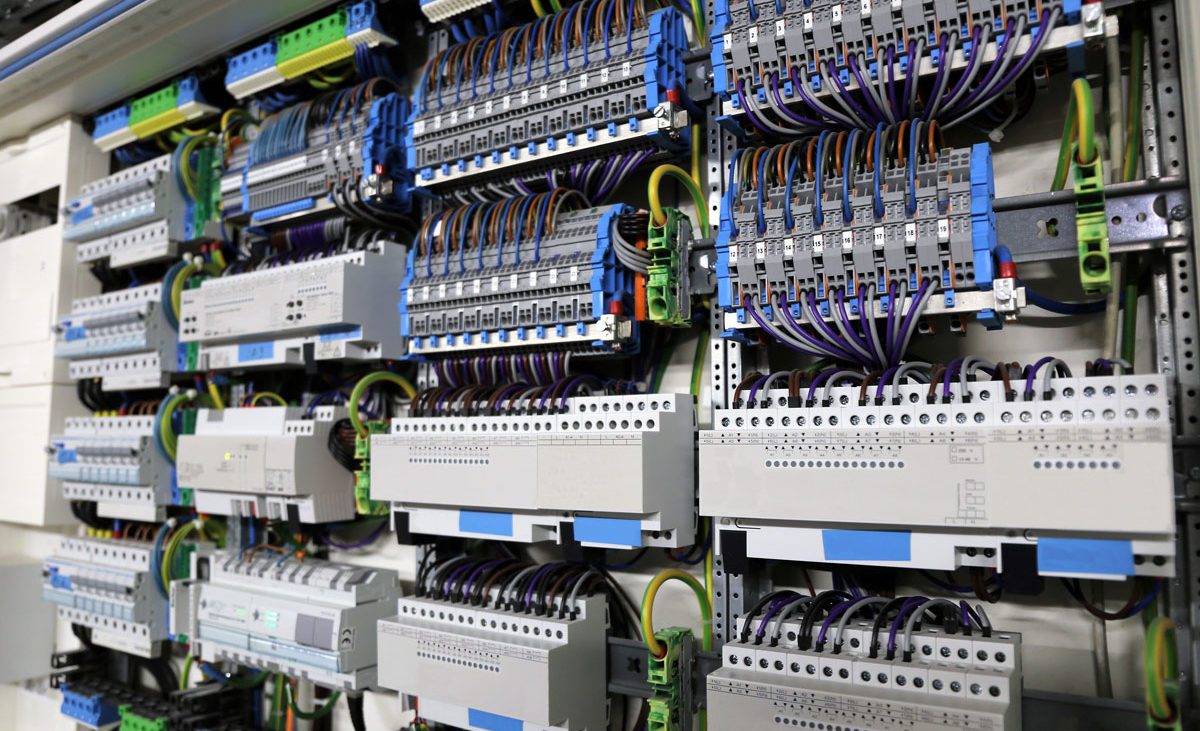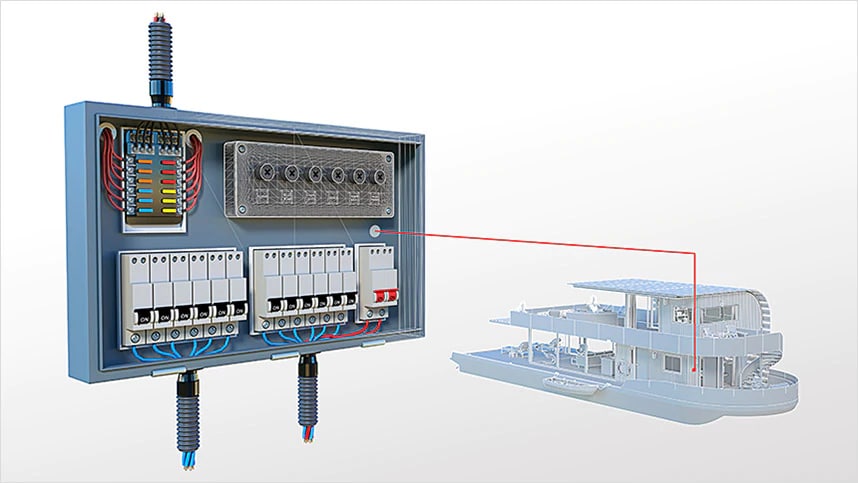Enhancing Industrial Electrical Design for Large-Scale Operations
Enhancing Industrial Electrical Design for Large-Scale Operations
Blog Article
Cutting-edge Electric Design Providers for Modern Facilities
The advancement of modern-day infrastructure requires cutting-edge electric design services that not only boost operational effectiveness however likewise address sustainability difficulties. As city settings grow progressively intricate, including innovations such as wise grids and renewable power sources comes to be vital. These advancements not just assure to optimize energy usage but additionally foster strength against future demands. The landscape of electric design is undertaking quick makeover, motivating a more detailed evaluation of emerging fads and their effects for long-term framework stability. What might the future hold for those that embrace these innovative strategies?
Value of Cutting-edge Electrical Design
Ingenious electric design plays a crucial function in modern-day framework, affecting not just effectiveness however also sustainability. As cities advance and the demand for energy boosts, the demand for sophisticated electric systems ends up being extremely important. These systems need to not just fulfill current needs yet also anticipate future development and technological advancements.
A well-executed electrical design can significantly lower power usage, thereby lowering operational costs and lessening ecological impact. By integrating renewable resource sources, such as photovoltaic panels and wind generators, innovative designs can improve power independence and resilience. Clever grid modern technologies permit for real-time tracking and monitoring of energy circulation, maximizing efficiency and lowering waste.
Safety and security is an additional vital facet of electric design. Carrying out innovative modern technologies and strenuous standards can minimize risks related to electrical failings, guaranteeing a secure setting for services and citizens alike. Additionally, innovative styles assist in flexibility, enabling infrastructures to integrate arising modern technologies seamlessly.
Trick Fads in Electrical Design
As the landscape of electrical design remains to evolve, several crucial trends are shaping the future of the market. One significant fad is the integration of wise technology into electric systems. The expansion of the Internet of Points (IoT) has made it possible for real-time monitoring and control of electrical tools, boosting efficiency and helping with anticipating maintenance.
Another pattern is the growing emphasis on modular design. This method enables scalable and versatile remedies, making it possible for framework to adapt to altering demands without substantial renovations. In addition, making use of innovative simulation tools and Building Information Modeling (BIM) is becoming increasingly prevalent, simplifying the design process and boosting partnership among stakeholders.
Additionally, advancements in products science are bring about the growth of lighter, extra sturdy, and energy-efficient parts. This innovation is specifically essential for high-performance structures and facilities jobs.
Lastly, there is a marked change towards data-driven decision-making - electrical load calculation. Leveraging information analytics assists developers enhance systems for efficiency and cost-effectiveness. Together, these patterns signify a transformative era in electric design, boosting functionality, sustainability, and resilience in modern facilities
Sustainable Power Solutions
Lasting energy solutions are significantly becoming a vital emphasis in electric design, mirroring a wider dedication to ecological obligation and source efficiency. These remedies intend to decrease ecological effect while maximizing power intake in various infrastructures, from household structures to big industrial centers.
Among the this page foremost methods includes the integration of sustainable power resources, such as photovoltaic panels and wind turbines, into electrical systems. This not only decreases dependency on fossil gas but also enhances power resilience. In addition, cutting-edge power storage systems, such as innovative batteries, enable reliable management and circulation of energy, guaranteeing that surplus energy generated throughout peak production can be utilized throughout high need durations.
Additionally, energy-efficient design techniques are being embraced to enhance overall system performance. This includes utilizing energy-efficient illumination, heating and cooling systems, and wise structure modern technologies that adapt and keep an eye on power use based upon occupancy and environmental conditions.
Smart Grid Technologies
The execution of lasting energy remedies naturally brings about the expedition of smart grid technologies, which play a pivotal role in modernizing electric systems. Smart grids leverage progressed communication technologies and data analytics to improve the dependability, efficiency, and sustainability of electrical power circulation. By incorporating digital innovation with conventional grid infrastructure, these systems promote real-time monitoring, automated control, and enhanced decision-making abilities.
Among the crucial functions of smart grids is their ability to suit renewable resource sources, industrial electrical design such as solar and wind power. This flexibility not just minimizes dependency on fossil gas yet likewise permits a much more decentralized energy production model. Furthermore, wise grids allow need action programs, where customers can readjust their power usage based upon real-time rates, consequently advertising power conservation and lowering peak tons needs.
Additionally, wise grid modern technologies boost grid strength by enabling quicker identification and resolution of blackouts, ultimately reducing downtime. With predictive maintenance and analytics, energies can maximize procedures and boost solution shipment. As cities and areas remain to advance, clever grid modern technologies are important for constructing a lasting and reliable electrical infrastructure that meets the demands of contemporary society.

Future-Proofing Infrastructure
To make sure long-term feasibility and versatility, future-proofing framework is important in the swiftly advancing landscape of electric design solutions. As technology developments and power demands shift, it is important that electrical systems are developed with flexibility in mind. This requires including scalable services that can suit future upgrades without necessitating considerable overhauls.

In addition, sustainability should be a foundation of future-proofed layouts. Using renewable resource resources, such as this solar and wind, and optimizing energy performance lower dependence on fossil fuels, straightening with international efforts to fight climate change.
Conclusion
Finally, innovative electrical design solutions play an essential duty fit contemporary facilities. By focusing on flexibility, performance, and sustainability, these solutions resolve the evolving demands of energy systems. The integration of smart grid technologies and sustainable power services improves resilience and minimizes operational expenses. Future-proofing framework with innovative simulation devices and modular techniques makes certain that electrical systems stay receptive to altering requirements, inevitably adding to a more sustainable and energy-independent future.
A well-executed electrical design can significantly reduce power usage, consequently reducing operational expenses and decreasing environmental effect. By including renewable power resources, such as solar panels and wind generators, cutting-edge layouts can improve energy independence and resilience. Additionally, innovative energy storage space systems, such as innovative batteries, make it possible for effective management and distribution of energy, making sure that excess power generated during optimal manufacturing can be utilized during high need durations.
Clever grids allow demand reaction programs, where consumers can readjust their energy usage based on real-time rates, therefore advertising energy conservation and lowering peak tons demands. (electrical load calculation)
As modern technology advances and power demands change, it is crucial that electric systems are made with flexibility in mind.
Report this page